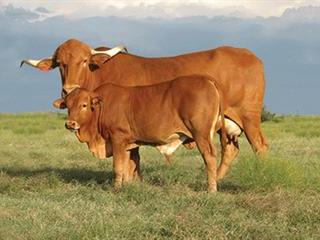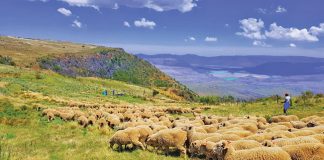
The list of founder members of the Afrikaner Cattle Breeders’ Society (ACBS) reads like a Who’s who of the early 20th century.
Louis Botha, JBM Hertzog, CF Beyers, Sir Thomas Smart, Sir Frederick Moore, HC Hull and MT Steyn, amongst other well-known South Africans, were on this list when the society was constituted in 1902. The executive committee consisted of well-known breeders JR Buhrman, Alex Holm, HWJ Ras and CJ van Zyl.
“Very few of the old-time breeders believed in registering cattle,” says Pierre Fouché, current president of the Afrikaner Cattle Breeders’ Society.
“The society wanted to formalise breeding values and promote the breed, especially in the light of competition from British and European breeds.”
Farsighted founders
Pierre explains that the vision of the pioneer breeders ensured the future of the Afrikaner breed and entrenched its valuable role in red meat production under extensive Southern African conditions.
READ: Know your cattle: Afrikaners
“The first Afrikaners registered in 1907 were two bulls and four females, belonging to WH Buhrman and JR Buhrman from Ermelo, and four bulls and 47 females, belonging to the then Transvaal Department of Agriculture. During the next five years, only 29 bulls and 113 females were registered, but in 1913, 263 animals were registered. Registration temporarily declined when there was a shortage of official inspectors, but figures soared to about 860 animals registered every year after 1916.”

Afrikaner Cattle Breeders’ Society president Pierre Fouché, from Leeudooringstad with his father Piet, a long-time Afrikaner cattle breeder and supporter.
An ACBS founder member, Jozef du Plessis of the farm Rietfontein in Theunissen, was an early breeder who played an important role in preserving the Afrikaner.
He pioneered the implementation of specific breeding strategies aimed at improving the standard of his herd, starting with a small, select breeding herd shortly after the Second Anglo-Boer War in the early 20th century.
Jozef was known for his top class bulls; animals such as Weeskind, Makman, Kanon and Klein Jozef are still known in the Afrikaner cattle breeding fraternity. Weeskind was sold for £1 500 (about R240 000 in today’s value). Jozef’s breeding cows included well-known animals such as Ligmuis, Sandrivier, Nonnie and Lenie.
Ups and downs
After a fairly turbulent history, the Afrikaner Breeders’ Society came to a turning point in the 1980s.
The period from the 1950s to the 1980s was known as the ‘show period’ in the history of Afrikaner cattle. Animals were evaluated on show ring standards and not on functional traits, despite warnings from animal scientists.
“The increase in the popularity of cross-breeding Afrikaner cows with British and European bulls also impacted on the society’s membership. This changed after we started actively promoting the Afrikaner’s exceptional qualities and selecting resilient animals that would perform optimally under extensive veld conditions,” says Pierre.
He feels that the breed has re-established itself as a good choice for discerning beef producers in the past decade.
READ: Bonsmara-infused Afrikaners: enhancing performance
Afrikaner cattle origins
Little is known about the Afrikaner’s origins. Pierre explains that its Bos indicus ancestors probably originated on the Asian Steppes, crossing into Africa from Aden about 2 000 years ago and gradually migrating southwards.
“The survivors, who reached Southern Africa, were adapted to arid conditions, extreme heat, tropical diseases and internal and external parasites.”

An advertisement for early Afrikaner cattle registered with SA Studbook. The first registrations took place in 1907.
“Portuguese sailors recorded the ancestors of the modern Afrikaner at the southern tip of Africa as early as the 15th century,” explains Pierre.
The Afrikaner’s long and arduous migration resulted in a hardy, no-nonsense breed, its development and history intertwined with that of the people of the country.
Afrikaner and Afrikaner-type cattle played a crucial role during the Great Trek from 1834 onwards.
Pierre estimates that at least 30 000 draught oxen pulling 3 000 ox wagons, excluding the Voortrekkers’ cattle herds, were used during the period.
“An estimated 200 000 Afrikaner and Afrikaner-type cattle formed part of the Great Trek. This was an extensive gene pool that has stood the local beef cattle industry in good stead to this day.”
The breed for the future
Pierre says that the modern Afrikaner is the beef cattle breed for the future. It is ideally suited to extensive South African conditions with good longevity and milk production, calving ease and a smooth short-haired tick-resistant hide.
READ: The Afrikaner embraces the future
“No European breed can hold a candle to the Afrikaner as far as backgrounding on the veld is concerned. The Afrikaner requires a third of the lick supplement compared to the large-framed European breeds. Coupled with a strong genetic leaning towards meat tenderness, this gives the breed the potential to be a major player in the beef industry.”

Afrikaner cattle are selected for functional traits, a process which has given rise to good functional animals.
“A number of composite cattle breeds have developed from the Afrikaner, such as the Sanganer, an Afrikaner-Nguni composite. The small-framed cow drops her second calf before 39 months and weans close to 50% of her bodyweight.”
The Afrisim is a medium framed Afrikaner-Simmentaler known for its good calving ease scores that does well on the veld and in a feedlot.
Other breeds developed from the Afrikaner include Hugenoot, Bonsmara and Afrigus; all resilient breeds well adapted to veld conditions.
Phone Pierre Fouché on 082 702 0228 or the ACBS at [email protected].
This article was originally published in the 28 December 2012 issue of Farmers Weekly.













